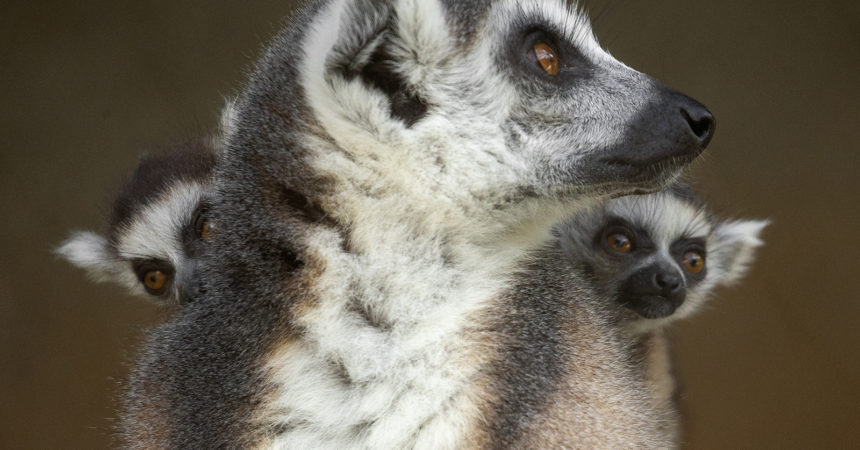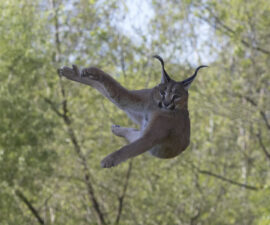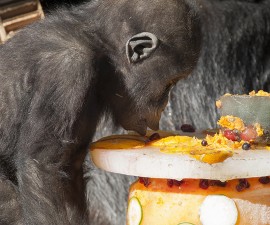Every wildlife care specialist strives to provide the best atmosphere and nutrition possible for those in their care with the intent that the animals have all the opportunities to thrive. One measure of success is when animals reproduce—which has happened within our ring-tailed lemur group at the Madagascar Forest in Conrad Prebys Africa Rocks!
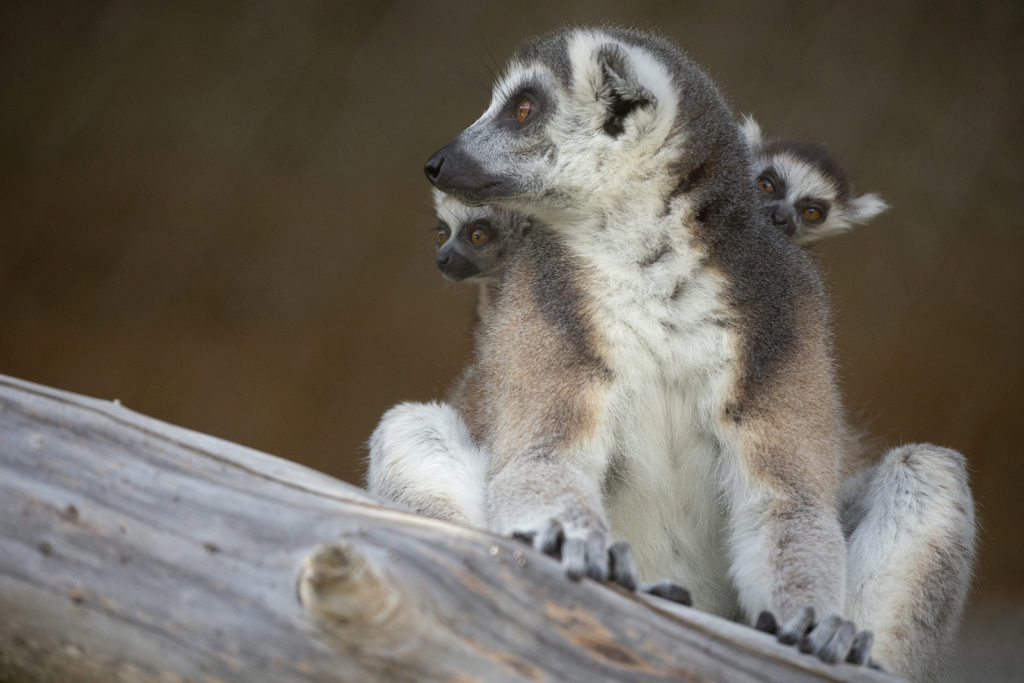
In September 2019, we had observed breeding behavior from the male Armand towards the two breeding females, Rosalita and Kaleena. What we saw is called ‘stink fighting’: when a male ring-tailed lemur rubs his scent onto his tail, then fans and flicks it toward a potential female mate. The goal is for her to catch the scent and be drawn to him. We hadn’t seen positive reactions from the females towards Armand, but apparently it was happening!
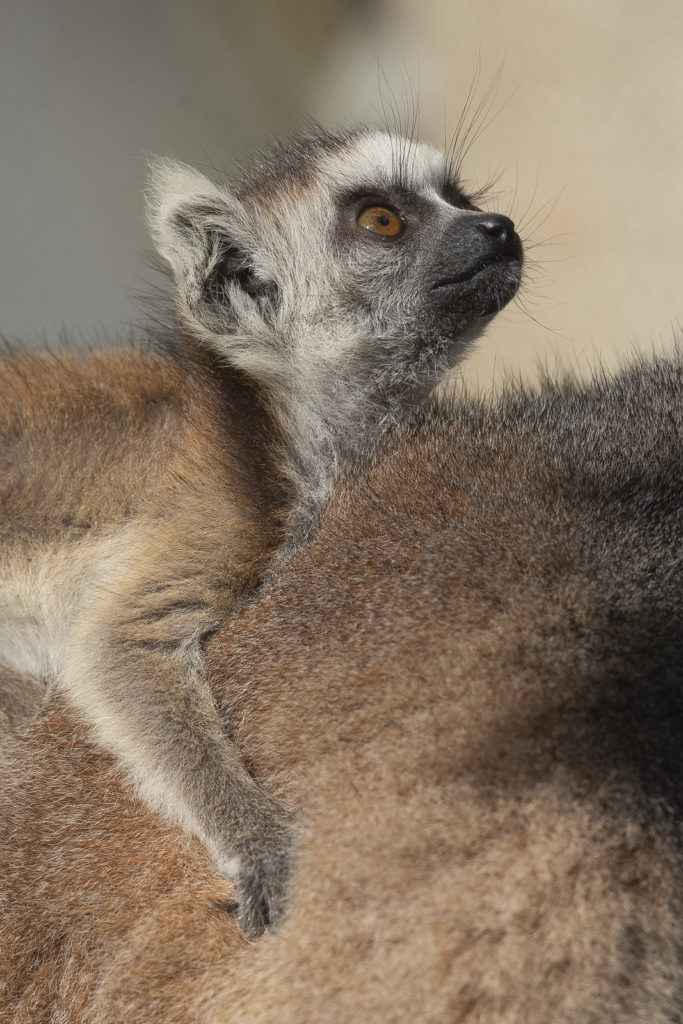
Each month, we carefully recorded the reproductive cycles of the breeding females. After October, we noticed that Kaleena was no longer cycling and that her weight was increasing—signs of possible pregnancy. After careful calculations we determined a “due date” between February 17-27 (ring-tailed lemurs have a 130-140-day gestation).
On Sunday, February 23, 2020 I arrived at the lemur habitat and began doing visual checks on all the individuals. Kaleena was on the ground with her back towards me and seemed to be licking her hands. Shifting my position to get a better view of what she was doing, I saw a little round black head in her arms. She then turned her body, revealing not one but two infants! The babies clung to Kaleena’s chest as she gently in positioned to nurse.
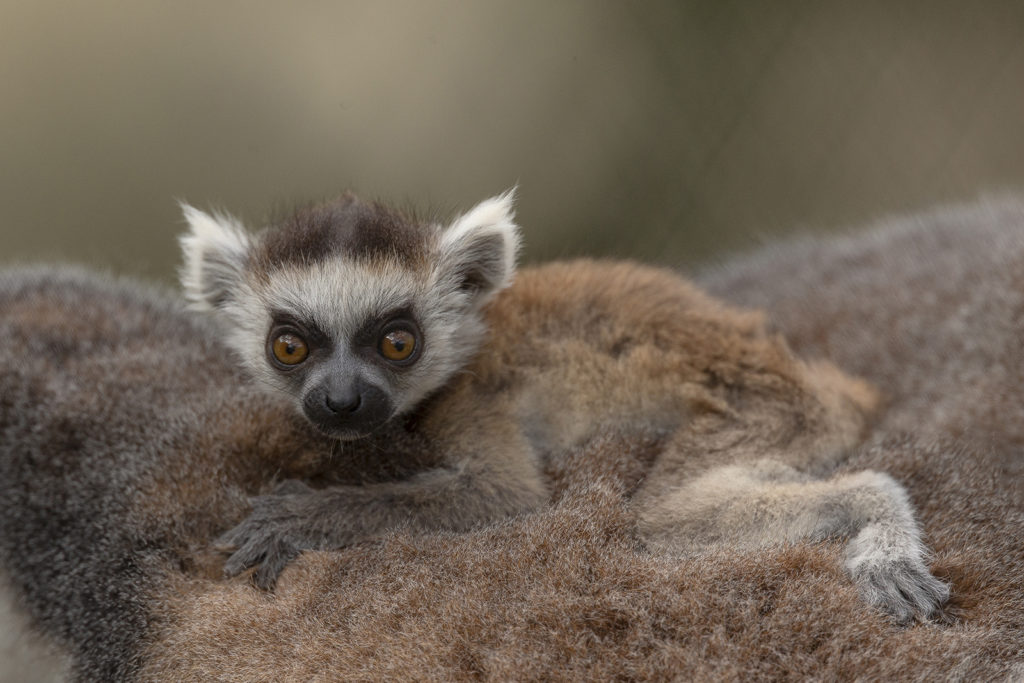
Kaleena’s past experience with alloparenting (where related females partake in helping in the care of the infants in the troop), shows in her excellent care as a first-time mother. For the first few weeks, infant care lies solely with the female (called a dam) with little to no involvement from the male. But his time will come. Once the infants begin to be weaned at around eight-weeks, Armand will have opportunities to teach them how to forage and explore their surroundings.
Following Kaleena’s signs that she preferred to be away from her group, we made it possible for her to be alone with her twins for the first three days to focus on caring for them. We observed her carefully positioning the twins to nurse often and moving about cautiously as she was still uncertain how to get around while holding two infants. She got the hang of it pretty quickly!
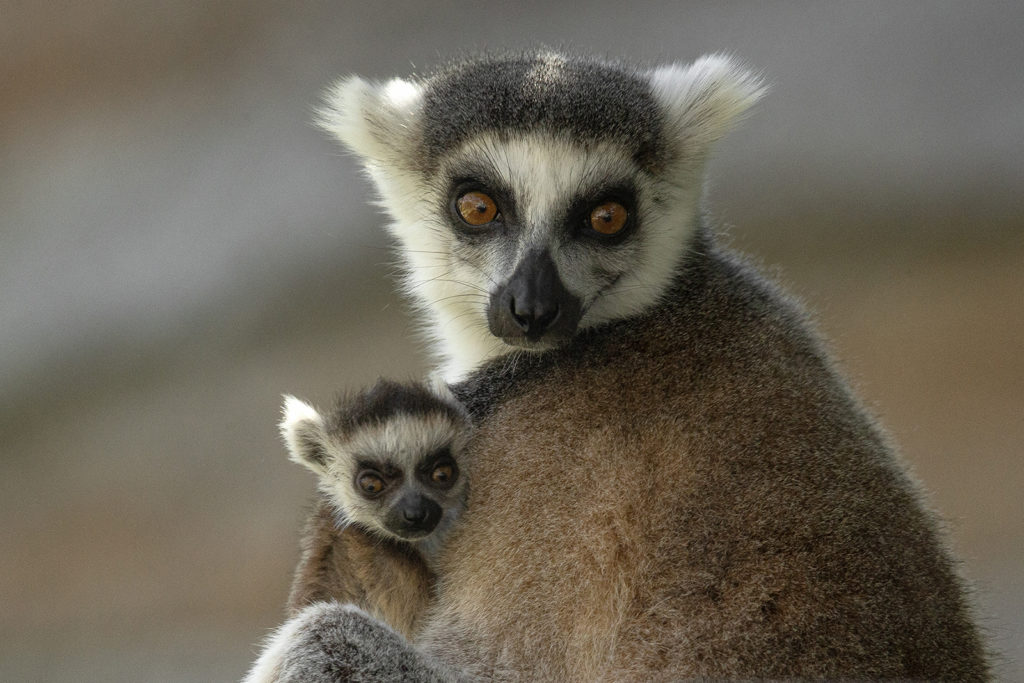
We diligently did several observations throughout the day to verify that the infants were in good nursing position, that they were indeed actively nursing, and to look out for indications of weakness such as dangling tails or frequent vocalizations from lack of nursing. The results? They’re doing great and Kaleena is already a pro at mothering. The little male is named Tsiky (meaning “smile” in Malagasy) and the female infant is named Meva (meaning “good” and “beautiful” in Malagasy).
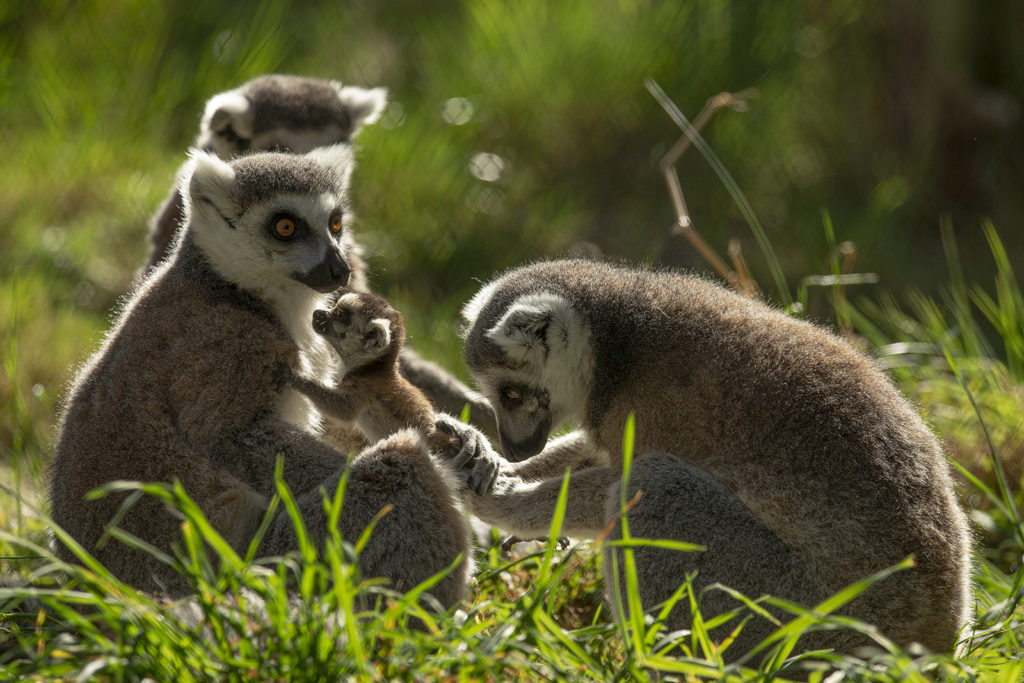
Ring-tailed lemurs typically give birth to one to two offspring. The infants spend the first two weeks of their life riding on the underbelly of the dam where they can be close to the mammary glands for frequent nursing. At two weeks of age they begin to ride on mom’s back and at three weeks they begin exploring off of mom. The twins, a male named Tsiky (meaning “smile” in Malagasy) and a female named Meva (meaning “good” and “beautiful” in Malagasy), are currently four weeks old and energetically discovering their new surroundings.
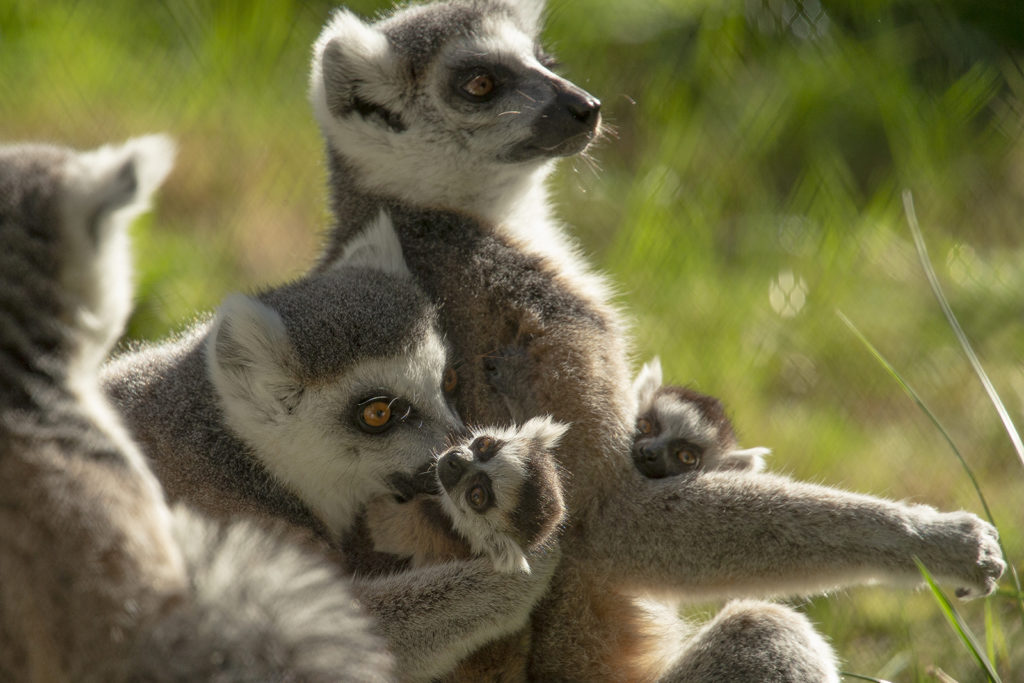
Kaleena is allowing her sister, Shabazz, to alloparent for brief periods and lets her half-sisters, Taz and Rosalita, groom the infants while she holds them for nursing. Ring-tailed lemurs are classified as Endangered due to habitat loss and the illegal pet trade. San Diego Zoo Global is contributing to saving this species by participating in the Species Survival Plan. Every individual addition to the population in managed care is a triumph to the conservation efforts in place on behalf of the ring-tailed lemurs in Madagascar and in zoos.
Yeleny Smith is a wildlife care specialist at the San Diego Zoo. Read her previous blog, What’s That Ruckus in Africa Rocks?

